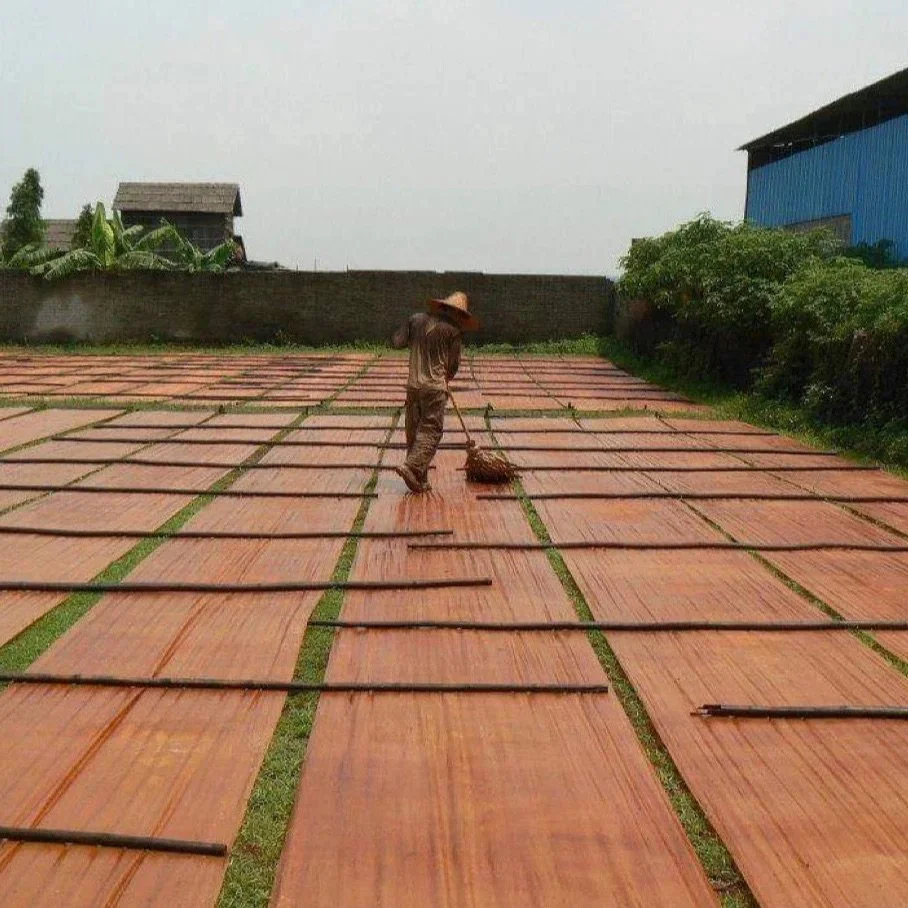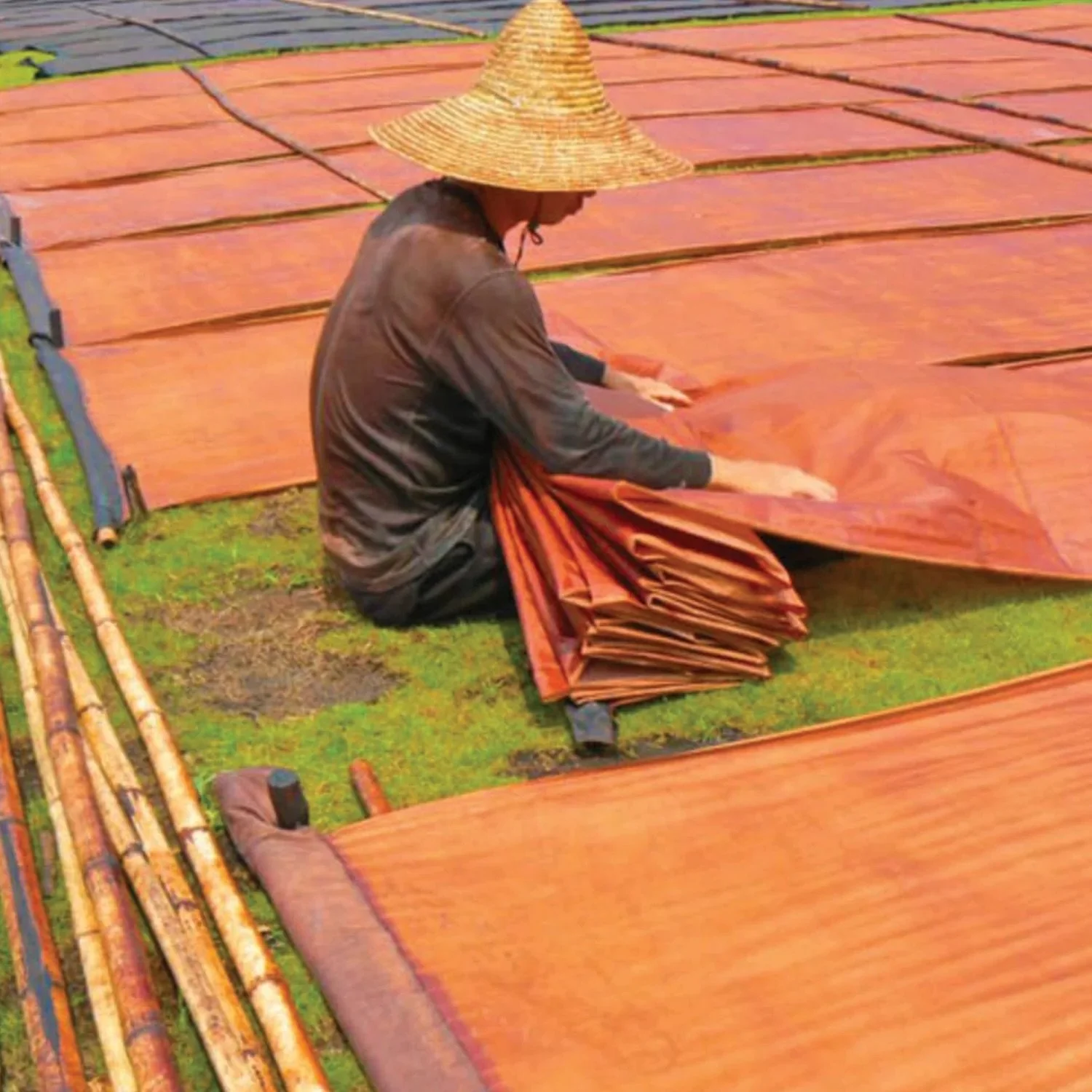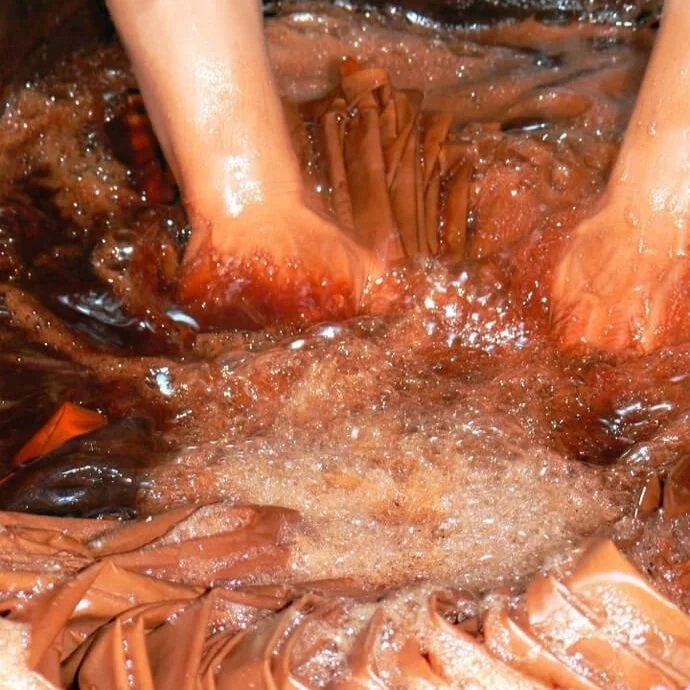The Intricate World of Chinese Mud-Silk
©SFDG
Chinese Silk
Chinese silk, a textile with a history dating back to the reign of Emperor Huangdi, around 2700 BCE, is one of the world's oldest and most esteemed fabrics. The silk weaving techniques developed during this era laid the groundwork for China's status as a major silk production hub. Among the diverse silk types produced in China, Pizi, or mud silk, stands boldly for its unique production process. Originating from the Guangdong province, Pizi silk, also known as mud silk, or ‘皮子泥丝绸’ (Pízi ní sīchóu) is a fusion of traditional silk weaving techniques with local innovations, mainly using mud from the Pearl River Delta. While standing out for its unique aesthetic and qualities as a silk, Pizi also boasts a one-hundred percent ecological process from the plant dye used to color the silk to the use of the sun to dry the textile.
How is it made? The Process:
The process of production speaks true to the tradition of silk-making in China. It starts with silkworm cultivation and harvesting, during which silkworms are fed mulberry leaves to initiate the spinning of silk-fiber cocoons. The cocoons are then harvested and spun into thread. This thread is then loomed into a smooth, lustrous fabric reminiscent of stereotypical ‘fine’ silk. Where the ‘fine’ silk turns to Mud-Silk is in the dyeing process. The dyeing process starts with a natural dye, typically derived from plants. After the natural dye is complete, the now-colored silk is coated with a mixture of mud from the Pearl River Delta and natural dyes. The mud contains unique minerals that help fortify the silk, providing a unique color and texture to the fabric. After the mud application, the textile is spread across fields and dried using the sun. This helps the mud and dye mixture set into the silk fibers of the cloth. Once dried, the fabric is washed to remove excess mud, leaving behind the minerals and seeped mud, giving the silk its characteristic sheen and texture. Finally, the silk is washed and inspected, ensuring the high standards of traditional Pizi silk making.
© Selvedge Magazine
Significance
In the age of fast fashion and mass production, small-scale production is dying. The process of Chinese mud-silk production is a testament to the world of craftsmanship and a reminder that continuing ancient artisanal techniques is critical to preserving culture. This dedication highlights the rich cultural heritage of Chinese silk-making and starkly contrasts the rapid, mechanized processes of modern textile manufacturing, underscoring the timeless value of hand-craftsmanship and the unique quality it imparts to Pizi silk.




